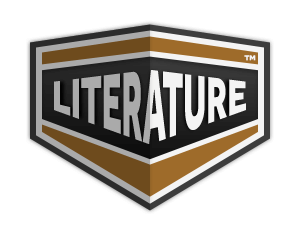Mr. Irish Potato
"Mr. Irish Potato" by Elizabeth Gordon is a charming children's book that tells the whimsical story of a potato named Mr. Irish Potato who embarks on a delightful adventure. Through vibrant illustrations and engaging narrative, the book explores themes of friendship, self-discovery, and the joy of embracing one's uniqueness. As Mr. Irish Potato interacts with various characters, readers are treated to a whimsical tale that teaches valuable lessons in a fun and entertaining way. Perfect for young readers, this story invites imagination and curiosity about the world around them.
“Oh, goody,” said the boy named Billy. “Baked potatoes for supper--I can smell them--I am certainly grateful to Old Ireland for sending us her wonderful potatoes. I’m going to have cream on mine and eat every bit of the jacket.” “So shall I,” said Somebody, laughing. “I don’t know of anything more appetizing than a big well-baked potato, but I must tell you, Billy Boy, that the cause for gratitude is the other way around--Ireland has America to thank for potatoes. But we surely owe her a vote of thanks for showing us what a useful article of food we were neglecting to use.” “Why! Where did the potato come from if not from Ireland--they’re always spoken of as Irish Potatoes--” said the boy named Billy. “The botanical books have this to say about it,” said Somebody. “Potato--Solanum tuberosa--a native of Chile, Peru, and the Rocky Mountains of North America. “The potato was taken to England from America in the early part of the 16th century by Sir Francis Drake who saw in it a valuable food for cattle. But when the grain crops failed in 1772 the people, especially those in Ireland, began to grow the potato extensively for food for the people, and as it was so easily raised it soon became very popular, and was eagerly adopted by the Irish as their very own. “In the United States the growing of early potatoes for northern markets is an important industry as far south as Florida and the Bermudas; but potatoes flourish best in climates which are just too cool for corn. There is a belt of 120,000,000 acres, running from Newfoundland, maritime Canada, and New England, through New York, Pennsylvania, and the American and Canadian Lake region, and by way of the Yukon Valley almost into the Arctic Circle, where potatoes have been found amazingly productive. The giant Idaho and Montana potatoes, which often weigh several pounds, are favorites for baking. “Growing from seed seldom produces satisfactory potatoes, but seedsmen plant them in the hope of discovering new and desirable varieties, as did Burbank when he grew from seed the potato which bears his name. There are now perhaps a thousand well-developed varieties, while at the time of the American Revolution there were only two, the red and the white. In growing potatoes, the most perfect tubers should be chosen, cut in pieces and planted; the new plants grow from the eyes or buds on the cuttings. “The cultivation of the potato has played an important part in the history of Europe. In certain parts of Germany it helped to check the famines caused by the Thirty Years’ War. By 1688 it had become the staple food of the Irish peasantry, and the failure of the potato crop in 1845 and the resulting famine started the first great wave of Irish immigration to the United States.” “I was reading an old poem about that Irish famine the other day,” said the boy named Billy, “where a little boy was begging his mother for just one grain of corn--I felt so sorry for him, but I can see now that he suffered hunger so that all the other children in the world might have good food all their lives--I hope someone gave him a nice hot baked potato before he got too hungry. There’s the dinner gong--Hurrah for the Irish!” “Hurrah for us, too!” said Somebody. “Sure,” said the boy named Billy.
Translation
Translate and read this book in other languages:
Select another language:
- - Select -
- 简体中文 (Chinese - Simplified)
- 繁體中文 (Chinese - Traditional)
- Español (Spanish)
- Esperanto (Esperanto)
- 日本語 (Japanese)
- Português (Portuguese)
- Deutsch (German)
- العربية (Arabic)
- Français (French)
- Русский (Russian)
- ಕನ್ನಡ (Kannada)
- 한국어 (Korean)
- עברית (Hebrew)
- Gaeilge (Irish)
- Українська (Ukrainian)
- اردو (Urdu)
- Magyar (Hungarian)
- मानक हिन्दी (Hindi)
- Indonesia (Indonesian)
- Italiano (Italian)
- தமிழ் (Tamil)
- Türkçe (Turkish)
- తెలుగు (Telugu)
- ภาษาไทย (Thai)
- Tiếng Việt (Vietnamese)
- Čeština (Czech)
- Polski (Polish)
- Bahasa Indonesia (Indonesian)
- Românește (Romanian)
- Nederlands (Dutch)
- Ελληνικά (Greek)
- Latinum (Latin)
- Svenska (Swedish)
- Dansk (Danish)
- Suomi (Finnish)
- فارسی (Persian)
- ייִדיש (Yiddish)
- հայերեն (Armenian)
- Norsk (Norwegian)
- English (English)
Citation
Use the citation below to add this book to your bibliography:
Style:MLAChicagoAPA
"Mr. Irish Potato Books." Literature.com. STANDS4 LLC, 2025. Web. 22 Feb. 2025. <https://www.literature.com/book/mr._irish_potato_5172>.








Discuss this Mr. Irish Potato book with the community:
Report Comment
We're doing our best to make sure our content is useful, accurate and safe.
If by any chance you spot an inappropriate comment while navigating through our website please use this form to let us know, and we'll take care of it shortly.
Attachment
You need to be logged in to favorite.
Log In